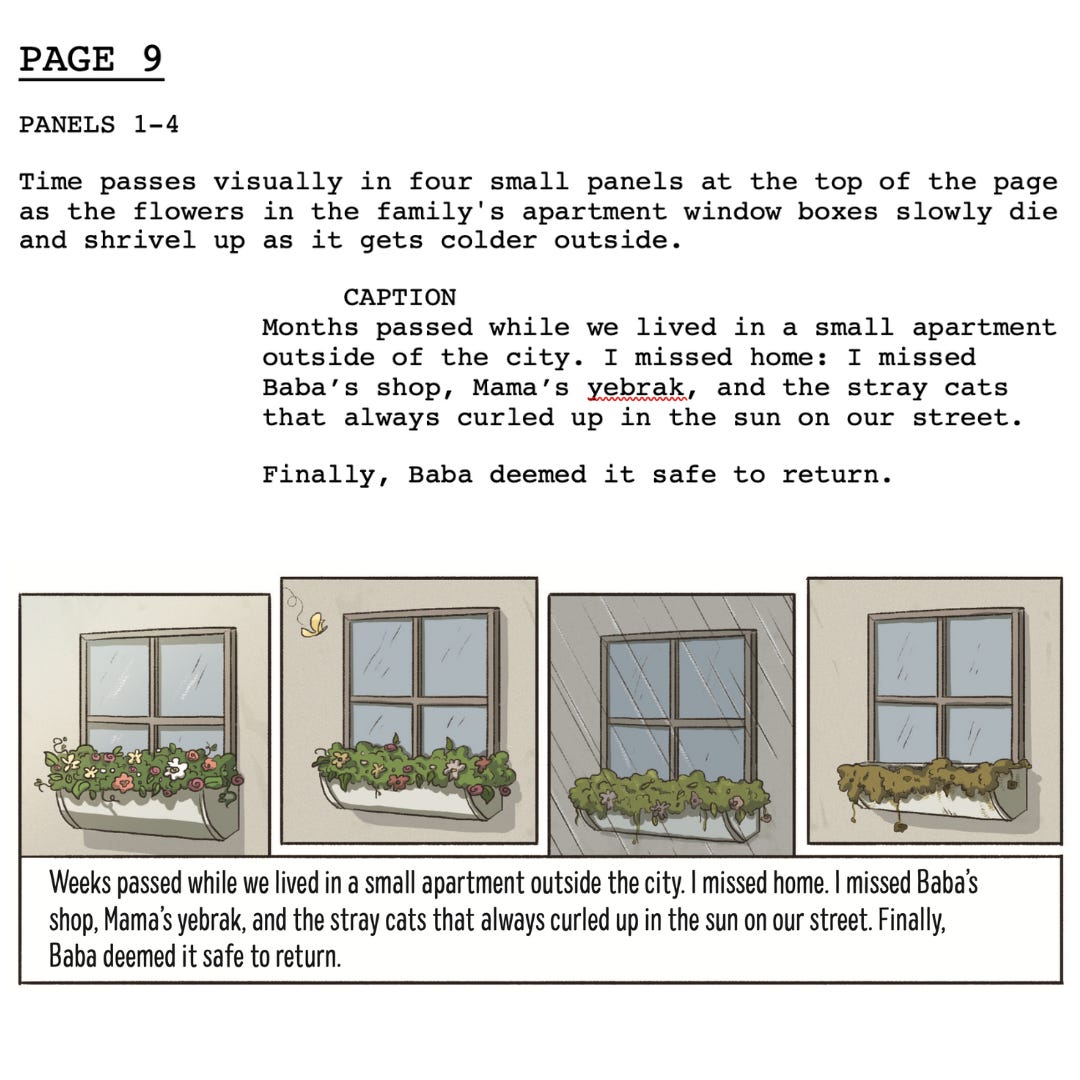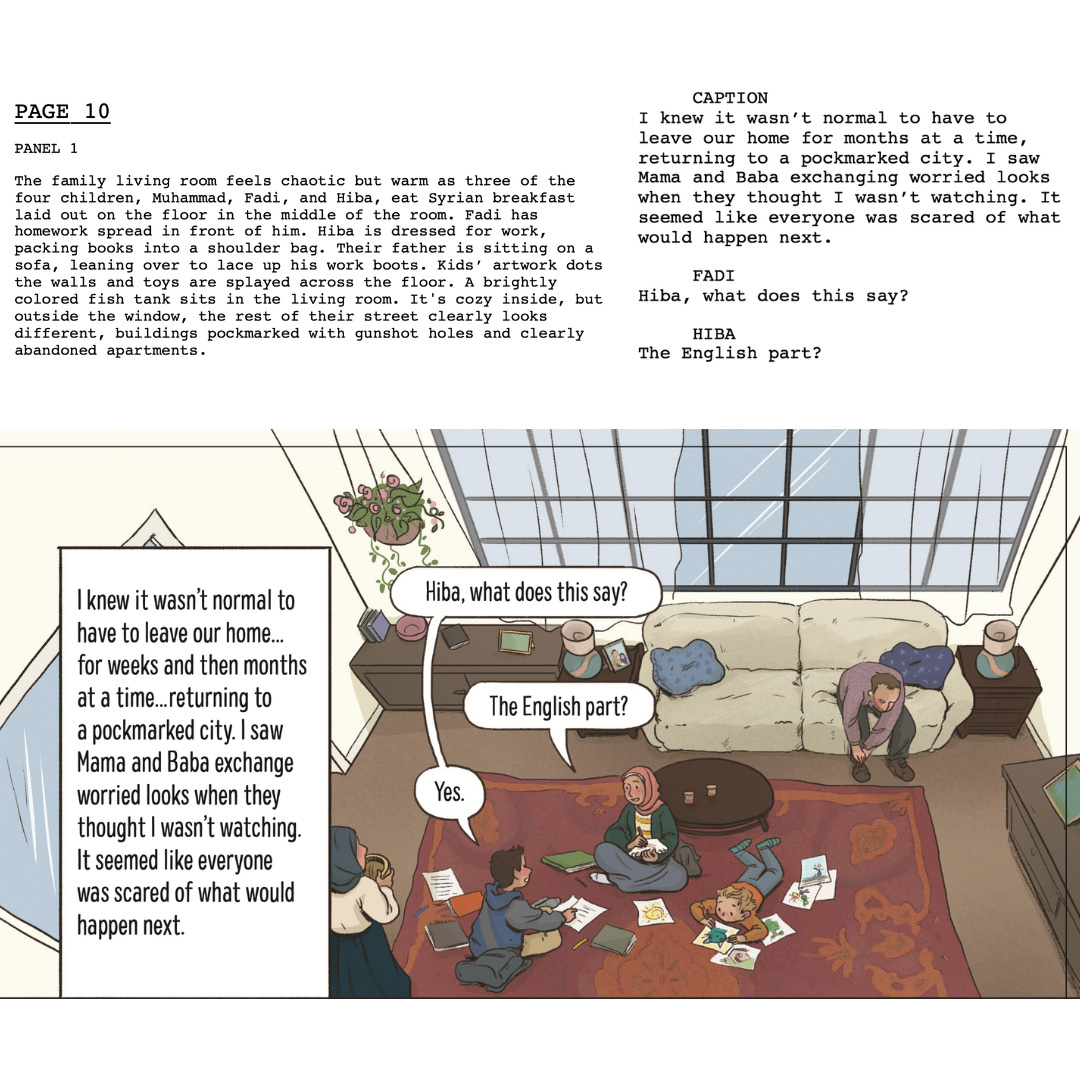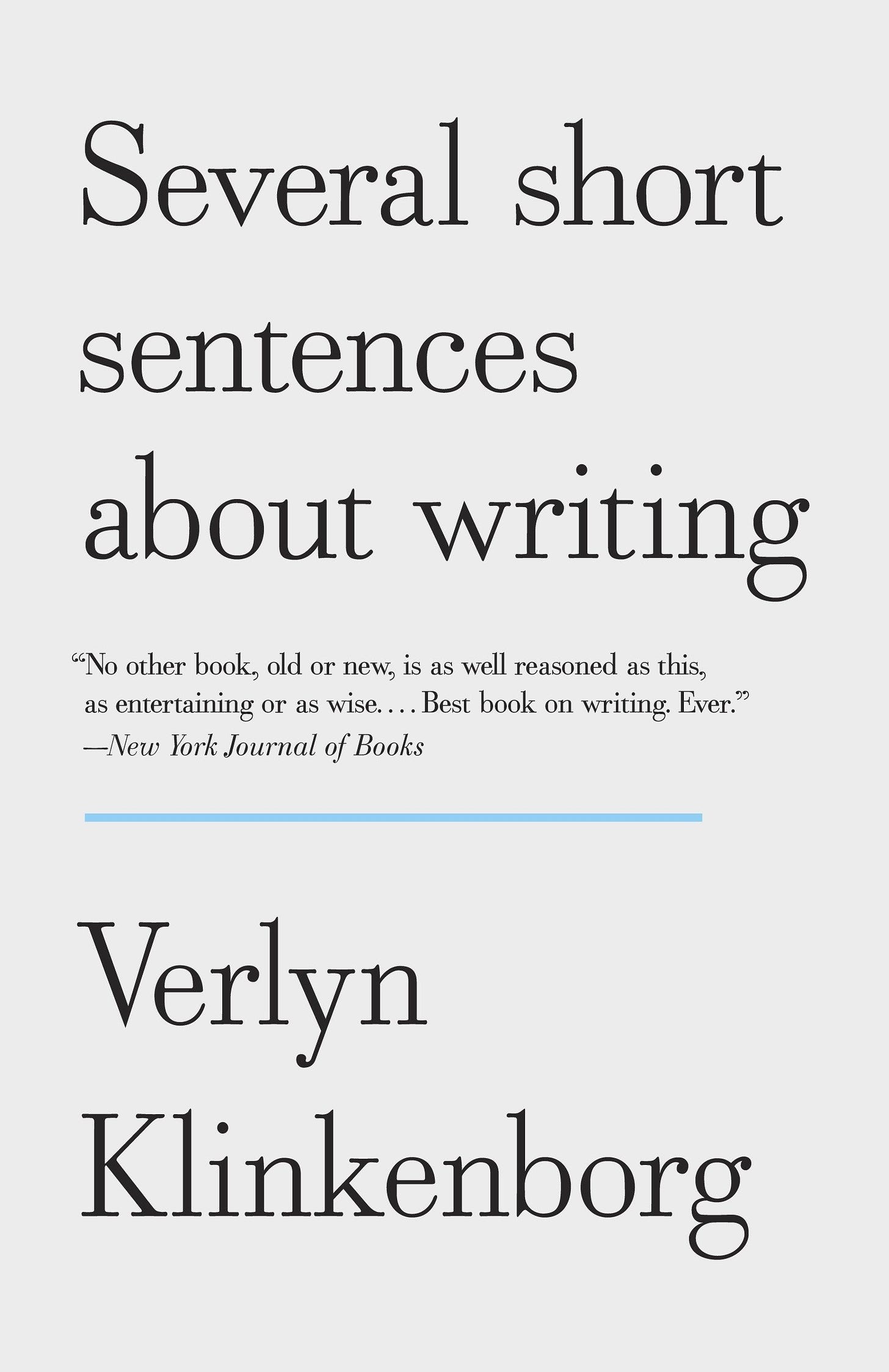Happy Wednesday and another edition of Neus News!
Today, we’ll dive deeper into how exactly a text-only script becomes a gorgeously illustrated graphic novel page, featuring more behind-the-scenes drafts! But first, we just found out that Muhammad Najem, War Reporter was selected for a huge honor: the Junior Library Guild Gold Standard Selection. We even get a gold seal!
Here’s how the Junior Library Guild itself describes the honor:
Every year, Junior Library Guild’s esteemed editorial team reviews thousands of children’s and young adult books to find the best of the best for its exclusive collection. Of the 40,000 books published for young readers every year, only the top 3% are deemed worthy to be a JLG Gold Standard Selection. And, 95% of those selections go on to receive starred reviews, countless best-of listings, and industry awards and honors.
Perhaps even more importantly, we also just got our first review from a real, live kid! Here’s what Eliza F., age 11, had to say:
“A Syrian kid living through the Syrian civil war decides to interview other kids his age using his phone to document what’s going on. He shares it on social media like YT Tw and FB. He felt like he was being targeted by bombs for his news videos. Tense, informative, serious, sad, but also has happy moments. Read it all in one sitting. Hard to put down.”
Thanks Eliza F! Want to see what the hype is? (You know where this is going…) Preorder your copy now! If you preorder from Bookshop.org, part of your purchase benefits independent bookstores at no additional cost to you.
While you’re at it, would you share this newsletter with a friend?
Now, onto the main event…
In my first edition of Neus News earlier this summer, I showed you exactly how I write a graphic novel. I exposed myself shared early drafts of the first page of Muhammad Najem, War Reporter, from original edits through ink illustrations and on to final color. But today, I want to go a little deeper into how exactly our illustrator Julie Robine turns the written description of each panel into actual illustrations! Spoiler alert: sometimes she doesn’t do exactly what I suggest. And that’s really, really good news.
Let’s start with an example of a pretty straightforward description-to-illustration pipeline. First is my text-only script, and then the final page you’ll find in Muhammad Najem, War Reporter.
Julie’s illustrations are exactly what I imagined in my head— but better! She added a few little details that made all the difference: the butterfly in the second panel and rain in the third add not only visual interest but also make the passage of time more clear.
Other times, I get overzealous in my descriptions. In the below example, I imagined this whole secondary scene, visible through the window, of abandoned apartment buildings pockmarked with gunshot holes. Julie made the very smart decision to keep the focus inside the apartment, rather than splitting the reader’s attention. I think otherwise, the scene would have been too busy— and it’s already a pretty detailed scene!
One more important note on the above scene: Julie was able to use reference images, or photos of Muhammad’s actual apartment growing up, upon which to base this illustration. Julie says those reference images made all the difference in her illustration process, especially for a memoir where these are real places and accuracy is so important!
Other times, I write pages that barely include any printed words at all! In the below example, I’ve only written eight words that the reader will actually end up seeing. But I still wrote detailed descriptions of each panel’s illustrations.
Julie is a phenomenal illustrator for many reasons, but one of my favorite is her ability to communicate very nuanced emotions. Here, she’s able to capture Hiba’s sad smile, “just a little quirk of the corner of her mouth,” as I described it. Julie also made another smart decision here: she split my panel 3 into two separate perspectives: one of Muhammad opening the door and a second panel isolating Hiba’s reaction. That means Hiba’s emotion is stronger.
One more note on this page, and it’s an obvious one: the page itself is black here. Drawing nighttime scenes is tricky, I’ve learned. I’m trying to be aware of light sources as I’m writing nighttime scenes in me and Julie’s next book, like including street lanterns or candles. This case was a little trickier, as they’re in a war zone with few options for light. Julie was able to “darken” this scene by making the background black and using more blue-toned, muted colors in the panels themselves.
Muhammad and I are both so grateful that we have not only Julie, but also our editor Andrea Colvin and art director Karina Grande, making this book the best version it can be! Again, I hope you can see, our theme all around is COLLABORATION. And now, our little book is literally in a factory being printed, getting ready for all of you!
That also means we can’t make any more changes. That’s just slightly nerve-wracking!
One more thing! Friends ask me for book recommendations all the time, so I thought I’d share them here too!
Right now, I’m reading Several Short Sentences about Writing by Verlyn Klinkenborg. I picked it up on a whim at Book People in Austin, Texas, off the bookseller recommends table, and I love it. It’s the best book about writing I’ve ever read.
I love how he talks about what he calls “volunteer sentences,” that is, sentences that seem to just “come to you.”
You may notice, as you write, that sentences often volunteer a shape of their own.
And supply their own words as if they anticipated your thinking.
Those sentences are nearly always unacceptable,
Dull and unvarying, yielding only a small number of possible structures
And only the most predictable phrases, the inevitable clichés.
…
Only revision will tell you whether a sentence that offers itself is worth keeping.
—Verlyn Klinkenborg, Several Short Sentences about Writing
I take that as a challenge, and perhaps so should you!







